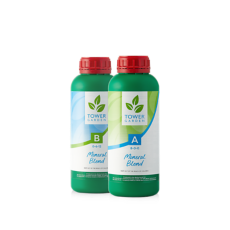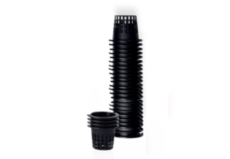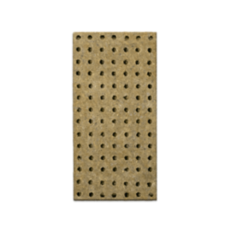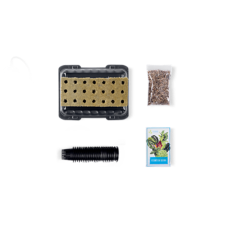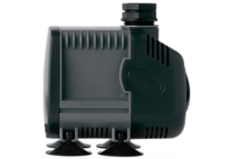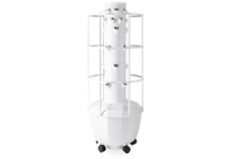How to Grow a Chef-Inspired Tower Garden
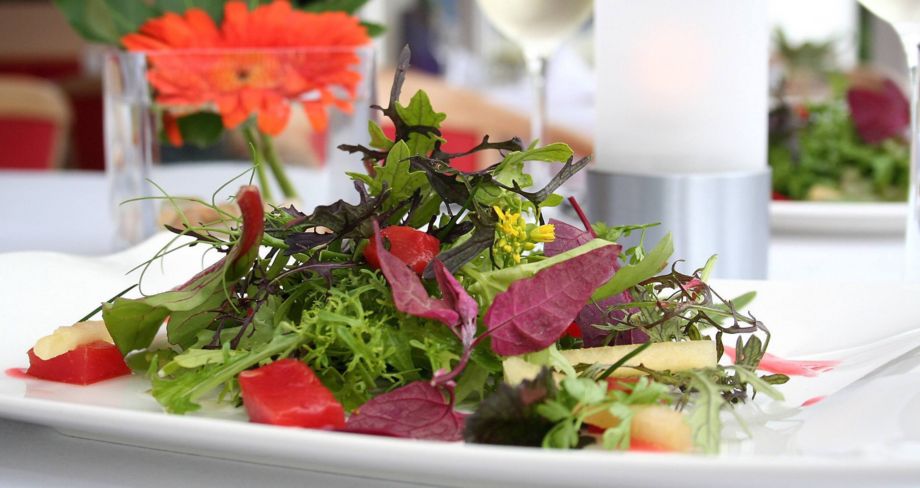
Do you dream of whipping up Tower-to-table meals with plump tomatoes, delicate dill, crisp peppers, and more? Foodies and dedicated home cooks, rejoice: The Chef-Inspired Tower is for you!
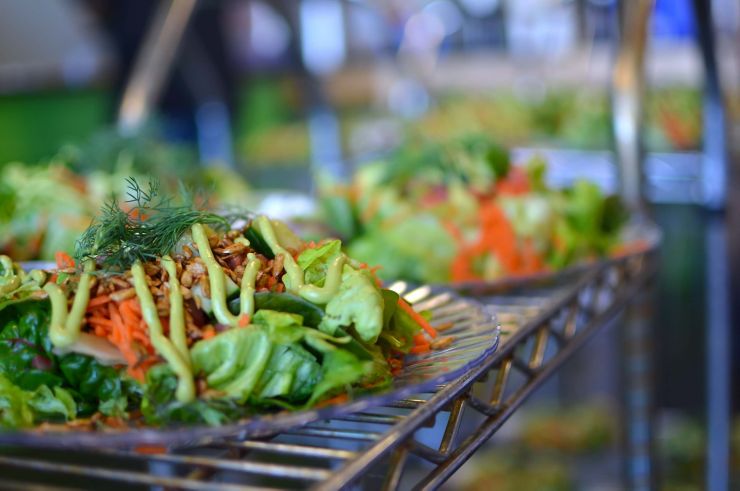
Top Plants to Grow in a Chef's Tower
Among the questions to consider when planning your Tower Garden is, "What plants will I grow?" To satisfy your inner chef (and hungry diners), aim for a large variety of veggies, fruits, and herbs that will shine in your culinary creations.
Browse this plant list to create your ultimate chef’s garden. You’ll need to decide in advance where to locate your Tower Garden, as many large, fruiting crops will not grow well indoors without some extra time and care. With that in mind, grow these plants indoors* or out for a steady supply of cooking ingredients:
- Basil – easy-to-grow herb, common choice for pesto base
- Beans – wonderful raw or cooked in stir-fries or soups
- Cabbage – often steamed, primary ingredient in slaw
- Chard – delicious, versatile green and top superfood
- Chives – delicate hint of green onion, suitable for omelets and dips
- Cilantro (Coriander) – both a herb and a spice, cornerstone in Mexican and Asian dishes
- Collards – packed with nutrients
- Cumin – core ingredient in Latin, Middle Eastern, and Indian cuisine
- Dill – adds a fresh, herbal flavour to foods like grilled fish and fried eggs
- Kale – a celebrated green, great in salads or sautéed
- Leeks – buttery member of the onion family, often added to soups
- Lettuces – add an unmistakable crunch to sandwiches, salads, tacos, and spring rolls
- Mustard greens – spicy and quite tasty when stir-fried
- Oregano – present in virtually all Italian dishes
- Parsley – more than a garnish, complements stews and potato dishes
- Rosemary – reach for this herb when roasting potatoes or grilling chicken
- Sage – associated with the holidays, but useful year-round
- Savory – lesser known herb, brings bean dishes to life
- Spinach – commonly eaten in salads and stir-fries
- Thyme – aromatic herb, pairs well with most everything (especially mushrooms)
*All plants grown indoors require LED Indoor Grow Lights to grow properly.
And if your Tower Garden will live outside, consider adding these to the mix:
- Cucumbers – essential in chilled soup, refreshing salad ingredient
- Aubergine – popular meat substitute, wonderfully rich when roasted or grilled
- Hot peppers – easiest way to spice up any dish, range in heat levels
- Squash – steamed, sautéed, or shredded for courgette bread
- Sweet peppers – enjoyable stir-fried or stuffed, adds colour to dishes
- Tomatoes – perennially popular crop with endless culinary applications
View more information on starting your seeds.
- Germinate your seeds. This step will take roughly 1-2 weeks. Tomato seeds should be ready for transplant (about 3-5 weeks) when they have a good root system growing from the rockwool cubes.
- Place one seedling cube into each net pot on your Tower Garden Growing System. Tomatoes grow large and heavy, so we recommend planting 1-2 plants in the bottom section of your Tower Garden.
- Gently press the seedling cube until it touches the base of the net pot.
- If you’re planting determinate varieties of tomatoes, you may want to use a support cage for extra structural support.
Growing Conditions
Temperature: 70-90°F
Light exposure and watering cycle can be controlled by our digital timer, but for manual reference:
Light
For outdoor – minimum 6-8 hours of full sunlight daily
Watering Cycle
Please set the Tower timer to “O” for outdoor growing.
Maintenance & Pest Prevention
- Check water and pH levels at least weekly.
- Keep roots away from pump.
- If growing outdoors, rotate garden regularly for even growing.
- Clean pump monthly.
- Check regularly for pests.
- Remove dead plant debris.
- Destroy diseased plant material.
More information on Tower Garden maintenance is here, as well as extra help for pests and troubleshooting. Growing tomatoes with Tower Garden may also require occasional manual pollination, learn why and how here.
Pruning
- Indeterminate tomato varieties need constant structure and redirection in order to become focused and productive. You need to prune indeterminate varieties throughout the growing season to keep them contained and build plant strength, which allows them to handle the ongoing fruit harvest. The fruit yield also stops when determinate plants stop growing.
- When your new plant has 6 leaves per stem, it’s a good idea to start pruning. Make the cut right in the middle of the internode space of the 4th and 5th leaf. At each node, a new stem will grow, giving you four new branches. Once these branches have developed into main structural branches, you can prune again to shape your plant as needed for flowering and fruiting.
- Depending on how strong a branch is, you can prune it to hold 2-3 trusses of fruit. You could use a “soft” pinch of young growth tips just past the last desired truss, or a harder pruning along the internode of the stem past the last desired truss.
- If your area has a long growing season, you might have to remove entire lower branches once they’re completely harvested. This keeps the plant’s energy directed toward the parts that are still fruiting.
- To keep your tomato plant’s energy directed into the strongest fruit-bearing stems, it is good practice to remove suckers, or side shoots, from the base of the plant. Suckers are the growths that appear in the crotch between the stem and a branch. Remove them by cutting just below the lowest leaf on the sucker, being careful not to injure the main plant stem. Remember to cut to leave a stub.
Harvesting
- Fruit will always mature in the order that the tomatoes appear on the truss. The fruit closest to the branch stem will mature first.
- Your first clue that a tomato is ripe is its colour: It should be a deep red, yellow, or purple depending on the variety.
- Your second clue that a tomato is ripe is its hardness: the riper it gets, the softer it will become. A perfectly ripe tomato has some give but is not mushy.
- The final clue that a tomato is ripe is that it should easily “pop” off the truss when it’s ready to harvest.
- If you like, you can harvest the entire truss by cutting the stem attaching it to the branch just behind the first peduncle (the flower stalk that supports either a cluster or a solitary flower) or by snipping the small peduncle to its individual fruit.
Ways to Enjoy
- Sauces & Jams – Tomatoes are the base of so many amazing sauces, jams, and jellies. Spice up your pantry by making your very own concoctions.
- Raw – By far the most nutritious way to enjoy freshly picked tomatoes. Eat them on-the-go, toss them in your favorite salad, or throw them on a sandwich for extra goodness.
- Soup – Nothing beats a bowl of hearty tomato soup to get over a cold or to lift your mood. Here are recipes from fellow Tower Gardeners for Creamy Tomato Bisque, Tomato Mushroom Basil Soup and a Roasted Cherry Tomato Gazpacho. You can thank us later!
Looking for more recipes and kitchen inspiration? Check out Let’s Cook.


